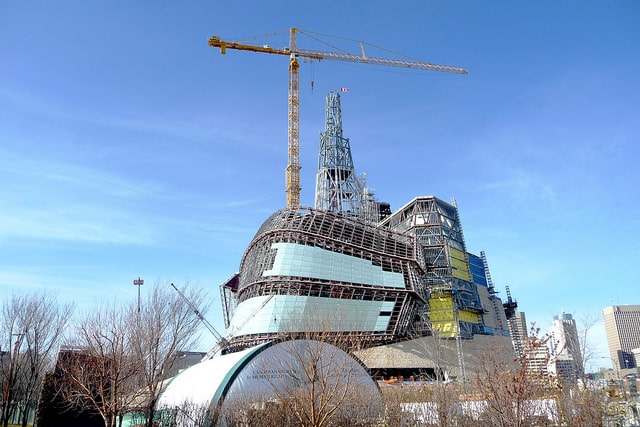 Creativecommons.org/ Herb Neufeld
Creativecommons.org/ Herb Neufeld
Opening in Winnipeg later this month, the Canadian Museum for Human Rights will be the first of its kind, dedicated completely to human rights past, present and future.
Exhibits will explore the evolution of rights, engaging visitors in an interactive experience that will inspire Canadians to make a difference in the lives of others. This will be the first national museum built in the last 50 years, as well as the first located outside of the National Capitol Region.
Creating the museum is a process that began in 2003, when CanWest founder Izzy Asper launched the initiative on the 21st anniversary of the signing of the Canadian Charter of Rights and Freedoms.
After his death, his daughter Gail Asper took over the project and she has seen her father’s dream come to fruition. The groundbreaking ceremony took place on December 19, 2008 with construction beginning a few months later.
To choose an architect, a competition took place, garnering 62 submissions from some 21 countries. The final design selected by the judging panel was submitted by New Mexico architect Antoine Predock, whose vision for the museum includes a descent into the “roots” of the building followed by a series of rooms, ramps and stairways before the final exhibit in the Tower of Hope that overlooks the city of Winnipeg. Predock took his inspiration from the natural beauty of Canada and the First Nations peoples, wanting to show that the museum (and human rights) is rooted in humanity.
The exhibits cover a number of subjects, including Aboriginal concepts of human rights, the Holocaust and the Canadian human rights journey. Galleries provide education about what human rights are and how different peoples have struggled to obtain them.
As visitors progress up through the building the focus shifts to protecting rights and what happens when the rights of people are disregarded. Finally, visitors learn about rights today and how to inspire change in your community. The tour ends at the top of the building, emphasizing the importance of our connection to the world and protecting the rights of all.


